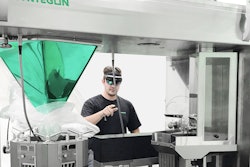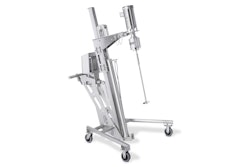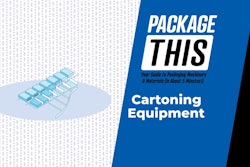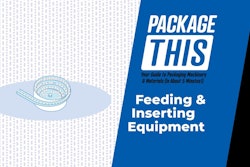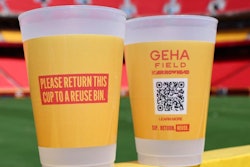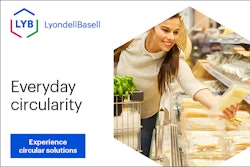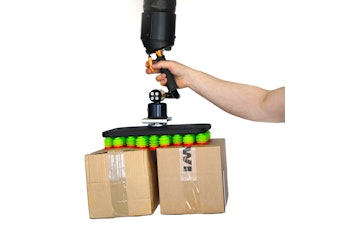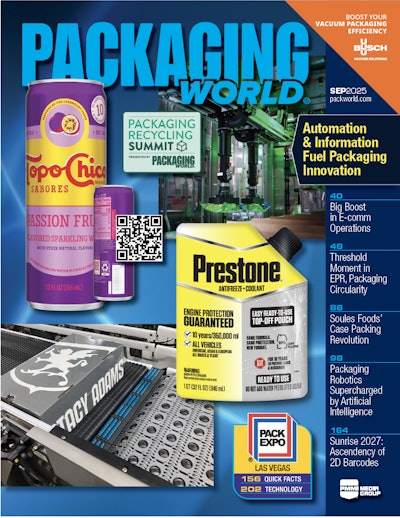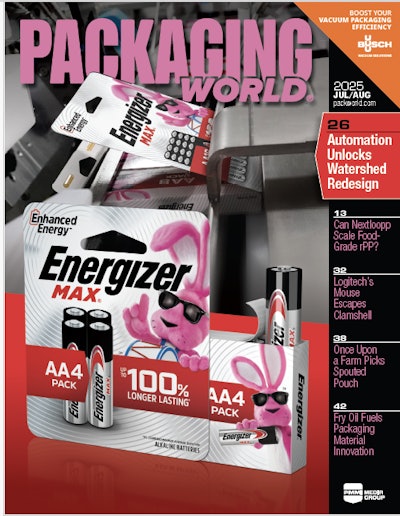The following is a transcription of an Innovation Stage presented Tuesday afternoon, November 10, during PACXK EXPO Connects. Watch the discussion here until March 31.
Welcome to PACK EXPO 2020 Connects in our presentation on Authentic, Safe and Connected Products Across the Supply Chain: Protect Your Brand. My name is Steve Tallant. I'm the Senior Director of Market Development at Systech. And in today's discussion we're going to talk about issues surrounding brand protection, mainly finding and discovering counterfeits. The opportunities to help fight this problem with connected packaging. Our solutions that create digital identities through an e-Fingerprint. I'll go into what that means and how it's created. And finally, how… (can this effort ) bring the power of brand protection to end consumers themselves?
First off, I'd like to introduce Systech in case you don't know us. We have been around for over 30 years. We are most well-known as the pioneer in productized pharmaceutical serialization, but we've worked across all kinds of industries in consumer packaged goods, food, nutraceuticals, et cetera. We have products on thousands of lines. And what's great is that, we recently became a solutions division of Markem-Imaje, which is a Dover company, which gives us a much bigger platform to operate, and they're well-known for their product identification and traceability solutions, printers on the line, other devices. And obviously, as you can see here that they're much bigger than Systech. So we're so excited to be a solutions division of Markem-Imaje.
So in this time of remote events, we see and continue to see large amounts of counterfeit products being found in the market by various initiatives. Okay, we'll get into what those are. The economy of a small country or not so small country really could be encapsulated in the amount that is going on in the gray market with both counterfeit and diverted product. And we need to find better mechanisms to discover these counterfeits, fight the fakes, and stop this from being this horrible global phenomenon across all industries. Things are exacerbated right now with the pandemic, because there is so much online commerce. And online commerce is a very large facilitator of the gray market. Looking at statistics, when you look at June of 2020 versus June of 2019, there's a 76% increase in e-commerce sales year-over-year. So, this is really creating a perfect storm of opportunity for counterfeiters in the marketplace.
So what we want to think about now is, how do we better fight this issue? And we believe that it's in the power of connected packaging, where consumers want to be connected with their packaging. We see things like smart label, QR codes, et cetera, where we have real basic ways of connecting an individual with their phones to brands. But we can see some great opportunities here, especially because when consumers users have mobile apps, they're more engaged and what could be more engaging than having a phone in one hand, your product in another, bringing the two together? That's a very powerful combination. And we want to get into more possibilities there.
So as I talked about the importance of discoveries of counterfeits, I'd like to talk about this through economies of scale and the various methodologies that brands are employing to fight the fakes. So first off, you have teams of corporate field inspectors. But that's a small group of individuals who are going out physically in the world, maybe doing secret purchases, web buys, really hand-to-hand combat with the counterfeiters. Nations customs organizations are often used. So like in the United States, you can register your products with customs during inspections at various ports of entry. They can look at different containers and things like that. In today's commerce online though, you can have almost micro counterfeiting, if you will, where very small packages, individual units are coming in that are counterfeit. And that makes it a little bit more difficult for customs to do their job. Plus, national borders are large. The internet is wide. Customs can only do so much.
I mentioned obviously the biggest growth in counterfeit distribution is on the web via e-commerce platforms. So there are various... I coined the term "web scouring". There may be other terms for it. But essentially they are software agents that go out and look at different websites for your products that you've input into their platforms. And they go out and look to try to find illicit online storefronts, selling counterfeit versions of your products and have a legalese and team behind them to have cease-and-desist orders come in and take them down. The only problem there is that online platforms are very flexible. So as almost as soon as an elicit vendor gets taken down, they can regroup and put a new also legitimately looking storefront up. So web scouring is an important part, but it only gets so far.
Customer education. We see brands themselves putting out pretty detailed overviews of what counterfeit products look like, how to avoid fakes in online stores, in real stores. Luxury brands have done this. I always harken back to about five years ago. There was a big kid's toy called the Rainbow Loom. And it was obviously, it was hot. Everybody needed one for their kids, and it was hugely counterfeited. And the Rainbow Loom put out on their website what to look for in a counterfeit Rainbow Loom, the different printings on the packaging, the different nuances in the product. And all that did quite frankly, was to make better counterfeits because the counterfeits looked at that as essentially a spec to build better rainbow looms. So customer education is important. It's another layer, but it only goes so far.
In my view, we want to increase the number of touch points, participating in discovery of counterfeit goods to your entire customer base, the crowd, the notion of crowdsourcing. And that really obviously can reduce the per item cost of discovery found. And I think it augments everything. Not one of these things solves everything. But if we can get to almost universal crowdsourcing of brand protection, we're going to get much farther along faster.
What does this look like? Well, we want to scale up digitally. And we do see serialization as a backbone of digitizing your products and onboarding them to things like the internet of things. We've seen this in pharmaceuticals, we're seeing a groundswell in other industries for serialization. The whole goal is to reduce the time to find the fakes, get them out of the marketplace, and increase the effectiveness of these programs. So today... Let's see here, we have a small subset of the possible people looking for fakes. And we can exponentially increase the digital technologies, widening the aperture of availability of these technologies to your consumers. So let's scale up digital.
So Systech has our brand protection suite, where we deliver connected and safe products from packaging all the way through to the consumers hands. And this is our... We call it a family crest. And we have underpinning technologies of serialization, traceability, and product authentication that drive value like regulatory compliance, counterfeit and diverted product detection, and ultimately, and consumer engagement, which we do want to get into it and talk about.
Okay. So what does this look like from a practical standpoint? Again, we're on the line and then we're going all the way through the supply. So Systech has a suite of products that encompass, getting the right messages and codes on products, all the way out to the marketplace, where they can be tracked and traced. They can be authenticated, and consumers can do things with them. And at the end of the day, each of these steps, a lot of data is created and manipulated, and that can then be sent into centralized repositories for intelligence insight. And we'd like to really make it actionable intelligence. And we'll get into some of the things where this consolidated data becomes very actionable for you and your brand.
But for today's discussion, we are going to talk about our Non-Additive e-Fingerprint, where we can leverage what's already on your product packaging, which is barcodes and create a unique digital identifier for your products. Okay? So, here's a point of sale barcode, a normal UPC code. You have one of these on each and every one of your products. You have a million, 2 million, 10 million of the same UPC code.
But in industrial printing of making your product packaging, there are different variations, let's say, in the printing process created by the inks, humidity, the line speed, vibration. And when you look microscopically at a barcode, there are going to be little nuances and differentiations, which we've created an ability to vision and derive algorithmically. A unique identifier for each and every one of those codes, it's patented and it's really a compelling way to transform a million of the same barcodes into a million unique product identifiers.
Now, because we have identified each and every one of these products uniquely, we're able to associate what we call DNA or individual data about that item. So, it's now able to have a pedigree. So a product on the shelf that's one lot and batch, for example, the product next to it might be a different lot and batch. And we're able to intelligently be able to provide that data to a consumer like B People are concerned about the farm-to-fork movement. We're able to go in and say, "Hey, when things were harvested, which is different than this product." All the different pieces of information about a product you're able to now associate individually.
And most importantly, and it's alluded too on this, we're able to work at the speed of business, where we're able to capture these fingerprints on your lines at speed, which is, which is very important. I like this next pictorial to drive home what we're talking about with the e-Fingerprint. Again, where you have all of the same UPC code on a package, but then it's transformed into this digital representation, our e-Fingerprint, where it's uniquely identified. And I like this just to reinforce what we're talking about here.
Now, real-time product authentication. So at any stage throughout the supply chain, we're able to authenticate product. What does that mean? So distributors, when they get products from warehouses, they're able to go in and verify the products are authentic. Retailers are able to go in and verify the routing of their products. This helps in cases for divergent detection, where why and how did my product get to New Jersey from Ohio? That doesn't seem to make sense. Things like that. So we're able to do that all uniquely for each and every item.
Now, typically, field inspectors have had to find what they feel is suspect product out in the marketplace and send it back to corporate for final determination of its legitimacy or not. And that obviously takes time. And then there's a cycle to get back to the field inspector, to go, get those products out of the market. Now, a field inspector, with the power of his or her own smartphone, can immediately know, in market, whether or not a product is authentic or not. When secret buys come in that the individual has made, they're able to know right away. And if they find a fake, they're able to get their legal teams to get the cease-and-desist process going for that retailer.
So, again, we're getting real-time, we're increasing our speed. We're getting this information at a pace never before seen because we have that product now onboarded digitally. This obviously now creates an opportunity for a connected consumer to authenticate and engage with brands in a never before seen way. What does that mean? Well, quite literally, they had their smartphone. And if you have a branded app for your products, it's able to seamlessly fit right in and add in our key authentication element to the puzzle. So we increased the trust and credibility of your products. It's instant conductivity. And what's really compelling about this now digitally connected product is that communication is a two-way street. Okay? So you can push information to that person. Let's say recalls on that item. But you can also solicit feedback from the customer.
So I like to use the notion of wine as an example, which is an audience where ratings and feedback is very important. You may have a customer in New Jersey that sends feedback and like a connected sewer application. "Hey, this was great tasting notes. I really enjoyed it." Very positive feedback. You may have a customer in Washington State, give some feedback saying, "Yeah, this did not meet the mark that I was looking for." And now, because all of that data is connected, you can look into the supply chain of the successful product in New Jersey, find wholesalers, distributors, and retailers that are doing a great job, see what their best practices are. Then you can look at the supply chain journey of the product that went to Washington State. Look at it's wholesalers, distributors and retailers, and see where there may not be the rigid temperature controls that this product needs, where the materials handling isn't as good, where the warehouses are too warm, the warehouses are too cold, things like that. So it's all now connected to ultimately drive value far beyond just counterfeit protection …
Put your thinking cap on because there's not a one-size-fits-all all approach here. You may not want your customers to know that they're actually authenticating the product. You may not want to potentially scare them or what have you. But you want them to engage with the product. Ultimately, they are dealing with it, but they're not being given the information back that it may be suspect or is definitely authentic. You're going to have that information behind the scenes, collect all the data. Maybe if it is a suspect product, prompt that customer to add information about it, maybe snap a photo of it and include it to be sent back to the brand, something like that.
We do have the opportunity to create customer aware authentication, where you are definitely highlighting the fact that you want them to be purchasing and using an authentic product. So in the branded app, you initiate that process and engagement with an authentication. The authentication is done, presented with the fact that the product is authentic or suspect. And then go on their merry way within their normal [inaudible 00:16:15]. So again, there's two ways to look at that. Both can work equally well.
So what can we deliver once we have this now connected package and live authentication out in the field? Well, first of all, it's safety. For certain products, you're going to want to ensure that if there's any risk out there, if it's possible that it's suspect, the authenticity measures here will discover that and you can protect consumers. But then it's about taking that step further with leveraging the fact that your product is now digitized, where we can deliver contextually relevant product inspiration, where they have a product and you can direct them to do more and interesting things with that. Again, make it a two-way street, find insights and feedback from your customer base. In pharmaceuticals, you have this notion of a leaflet. You could have all kinds of different product and package information there for customer.
And again, we want to be able to deliver exciting new value to branded apps. Think of the gamification possibilities with a connected product. Well, let's use cosmetics as an example, a lot of cosmetics have the point of sale barcode right on the package itself. What if you did a contest for the most traveled cosmetic? You would have your user authenticate that cosmetic item, wherever they go in the world, they go to France, New York City, Australia. And then using those insights that are now able to be gathered from this now connected product in a cloud store where you can interrogate it and find the e-Fingerprint that has the most geolocation associated with it, where it traveled the most. So that could be a compelling, fun thing you can do in leveraging your newly connected product, all driven off the fact that it's able to be authenticated digitally. But again, nothing had to be added to this product. It's not additive. It's derivative of what you already have. It's really powerful. So this is where we now have the connected supply chain, products are digitized, and now we get into the data intelligence that's possible.
So again, we can now create use with this consolidated data that gives you vast amounts of business insight. If we think about all the connected elements, if we're starting from the base, a serialized product, for example, that has track and trace capabilities, it has been e-fingerprinted, so we have the authentication data. So a singular insight engine can be a reporting baseline for all of this stuff to create much more supply chain visibility. And what I think is important is that, we're not just finding the fakes better, fighting diversion better. We're able to look at what's going well in our supply chain, what's not going well and optimize it across the board based upon all of this data consolidated in one place.
But as it relates to counterfeiting, and our crowdsourcing capabilities here now with enabling the crowd, your entire consumer base to possibly be part of your brand protection engine, we're able to create very compelling heat maps of where elicit behavior is happening. Again, finding one fake is great. But certainly there's going to be more fakes around it. So being able to exponentially expand our reach, but when we find fakes, we can go in at a very targeted level to deal with them. And again, it's all about improving those response times, our efficiencies, and finding those gaps in our supply chain, especially as it relates to diversion. So various geographies and building businesses with different price points is where diversion begins.
So let's say you're an American company and you're looking to move into a European theater of business, you may need to introduce those products into Europe at a lower cost to distributors than you can here in the United States just to get the product going. But what can happen is that people will purchase those products at the discounted European price points and reintroduce them into the United States at the elevated price and with margins and that can create a lot of channel issues abroad and here. And that's something that companies really need to address. And it's exacerbated with online e-commerce platforms, where again, you're, you're selling globally. There is no direct sale. So you could, again, fuel that online inventory with discounted European purchasing products, your end consumers here in the States. So again, this creates a lot of possibilities around data-driven, actionable business insight that goes over and above just counterfeit detection.
So a key state, OZ Naturals. And this is important because if you think about anything that goes in your body or out of your body, you want to be sure it is rock solid safe. So Oz Naturals is a skincare product, and it was down in Australia, and they sold online basically to that audience, but then they grew, and they had issues of diversion and counterfeiting. And as a skincare product, they definitely did not want to have customers having issues. They had their own app. The customers were using that application. And they really saw the value of putting the authentication element right into their products, where they educated them to have the customer initiate using the application by engaging with their product.
And again, it makes a close connection between the brand and the end consumer, and really helps them to make both parties secure. Oz Naturals is secure, knowing that they've done everything they need to do to get safe product in the consumer segments. Their consumers can then, via their authentication mechanism, regardless of where they bought their product, online, maybe in stores as they expanded globally, the customer themselves know that they have a legitimate product. Okay?
So again, this is an interesting case where they were exclusively online and then went into stores. A lot of times what we see is the opposite. But either way, having a solution. And we do see layered approaches here, where it's not a one-size-fits-all. But having this digital transformation of their product packaging without having to do anything to their product packaging at the end of the day, was very powerful and really helped them push forward with the solution.
So at this time, normally, if we were all together, we would be having some time for questions and answers, et cetera. But now it's not that time. So what I'd ask you to do, if you do have some questions about what I talked about today in the possibilities or the technology itself, please go to the Systech booth, and I'm going to be there for the next hour or however long people have questions for. And I'll be there to take your questions and we can interact, get to know each other a little bit. And I think that's great. I hope you enjoyed this presentation. And I hope you enjoy the rest of PACK EXPO Connects 2020. Thank you.




